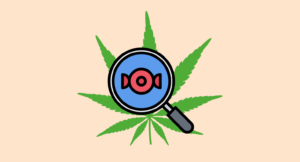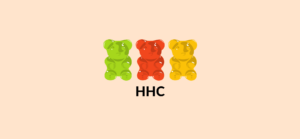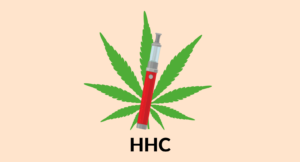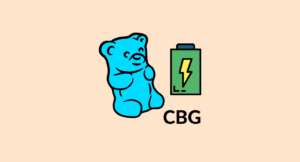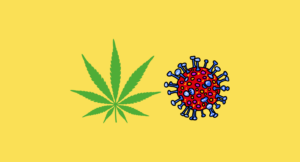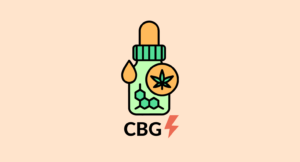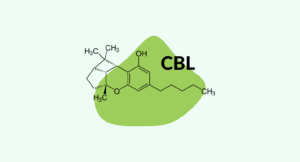Evidence based
What is CBN (Cannabinol)? What Are The Benefits?
CBN (cannabinol) is a very mildly psychoactive. It forms as THC breaks down.
CBN was the first naturally-occurring cannabinoid ever to be isolated — all the way back in 1896. At that time, it was believed to be the active ingredient in marijuana that made users who smoked the plant feel high.
It was later discovered that CBN was instead a byproduct of THC only found in old hemp plants or plants that were stored incorrectly.
CBN is mildly psychoactive, but only in very high doses.
CBN also has some unique medicinal properties that have piqued the interest of researchers over the past couple of years.
In this article, we’ll cover the current understanding of CBN — including what it does, how it works, what dose to take, and where you can find CBN products to try yourself.
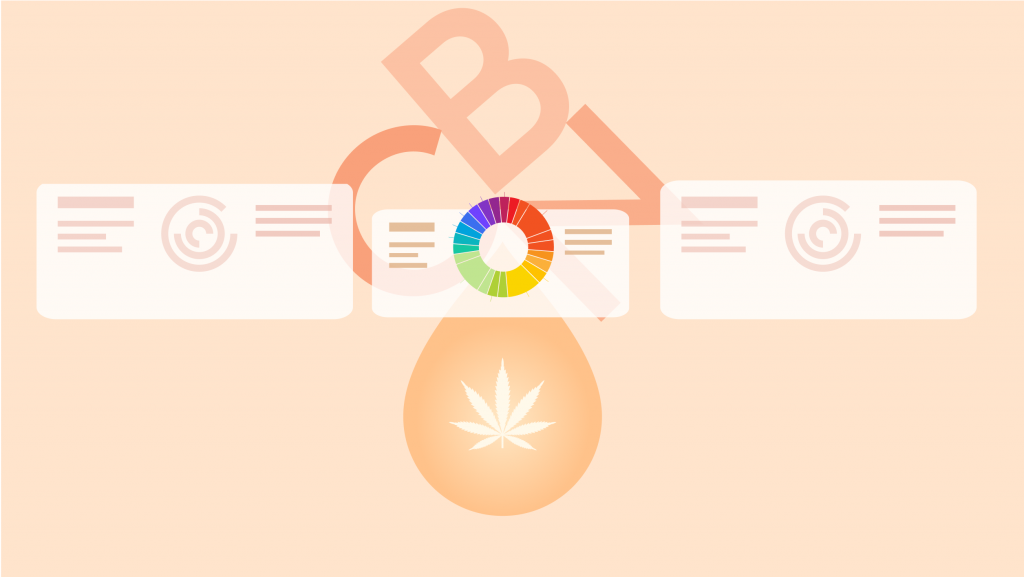
What is CBN?
CBN stands for cannabinol — it’s the end product of THC as it breaks down.
The longer hemp is stored after harvest, the higher the CBN concentration. Therefore, cannabis flowers that have been aged or stored for a long time will have higher concentrations of CBN than fresh flowers.
Additionally, cannabis plants that were harvested late tend to have higher CBN content than plants harvested early or at peak ripeness.
Like most cannabinoids, CBN is entirely non-toxic but has mild psychoactivity in high doses.
This cannabinoid is best known for its sedative effects. It’s been suggested to be the primary ingredient responsible for causing the “couch-lock” effect in certain marijuana or hemp strains. However, this idea has been disputed, as we’ll cover in more detail below.
Quick Reference: CBN Stats & Benefits
- CBN is created as THC breaks down
- CBN may enhance the psychoactive effects of THC
- May slow the progression of ALS
- Neuroprotective action on brain & nerve cells
- CBN alone and in combination with CBD has potent muscle-relaxant effects
- Alleviates glaucoma pain
- Inhibits bacterial growth & infection
- Stimulates appetite
- Anti-inflammatory & analgesic
- Alleviates arthritis pain
- May promote sleep (disputed)
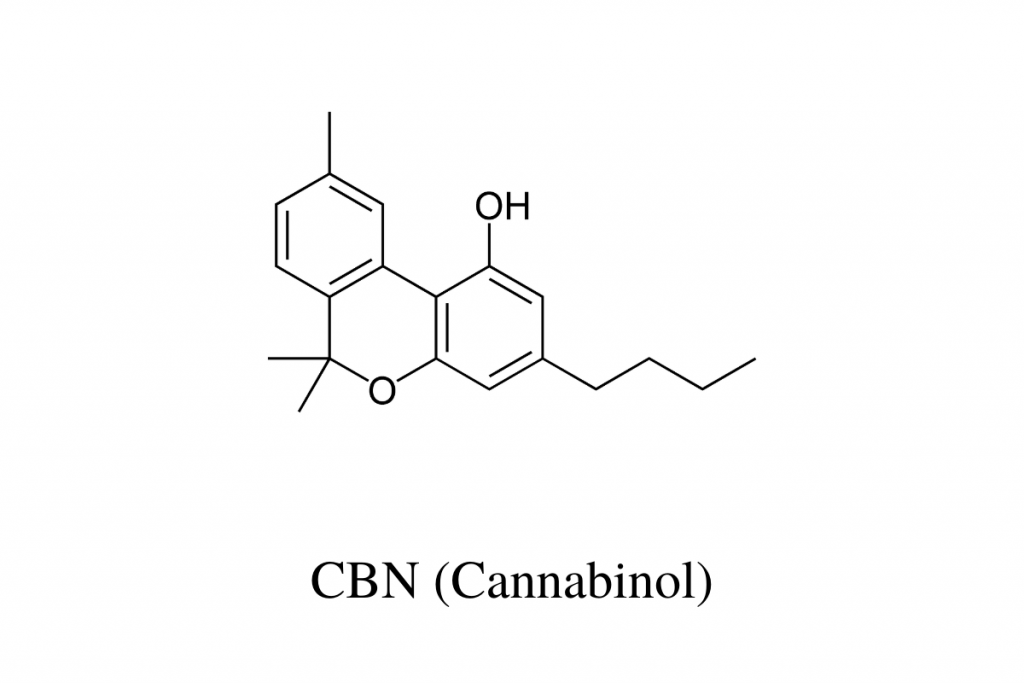
CBN vs. Other THC Analogs: Ranking Potency
CBN is an analog of THC — which means it’s almost identical from a structural aspect, aside from a few minor differences. Even subtle changes in a compound’s chemical structure can dramatically change its effects.
From a psychoactive perspective, CBN is one of the weakest members of the THC analogs.
There are two main types of differences for THC analogs:
- Double bond changes in the central ring structure
- Differences in alkyl side chains
CBN has 5 carbons in its alkyl side chain, just like delta 7, 8, 9, and 10 THC — but it has three double bonds in its top ring structure while the other forms of THC have just one. Delta 8 THC is roughly 5 times as strong as CBN, and delta 9 THC is around 10 times as strong.
The opposite of CBN is HHC (hydroxyhexahydrocannabinol), which has no double bonds, but the same 5-carbon alkyl side chain.
THCV (tetrahydrocannabivarin) looks like delta 8 or 9 THC, but with a shorter side chain (only 3-carbons long). The psychoactive effects of THCV are about twice as potent as CBN.
Another THC analog, called THCP (tetrahydrocannabiphorol), has 7-carbons on its side chain, which makes it nearly 33 times as potent as THC.

How Does CBN Work?
CBN binds to the same endocannabinoid receptors as THC (CB1 and CB2 receptors). Activation of the CB1 receptor, in particular, is responsible for characteristic psychoactive effects associated with marijuana.
Compared to THC, the effects of CBN are about 10% as strong.
This may produce psychoactive effects for some people in larger doses — but most people won’t feel high from this cannabinoid.
Is CBN Sedative?
CBN has always had a reputation for being a potent sedative. It’s largely associated with the “couch-lock” effect in certain strains of marijuana or hemp.
This idea stems from research first conducted back in the 1970s.
The old research that first reported this effect studied aged (old) marijuana to explore its impact. Many of the patients in this study reported a strong sedative sensation. So the logic was that older marijuana has a higher concentration of CBN due to the breakdown of THC — so it must be the CBN that’s resulting in the sedative effect.
Dr. Ethan Russo — one of the most prominent researchers in the cannabis industry today — suggests the claims that CBN is a powerful sedative aren’t accurate. He believes the early research that first reported this effect got it wrong.
His argument is that most of the more recent research hasn’t found this same effect. That CBN is the only sedative when combined with THC.
One of the more recent studies on this explored the effects of CBN in combination with THC [6].
They used four combinations for the test:
- 50 mg CBN
- 25 mg delta-9-THC
- 12.5 mg delta-9-THC + 25 mg CBN
- 25 mg delta-9-THC + 50 mg CBN
All patients were given all treatments in random order. The doses were spaced one week apart.
The study concluded that CBN appeared to increase THC’s natural sedative effects but possessed little sedative action on its own.
However, there’s more chemistry involved here than just CBN.
Older weed also has alterations in its terpene profile. These compounds evaporate and break down over time, leaving behind the heavier and more stable sesquiterpenes — many of which are potent sedatives.
Russo argues that it’s likely the result of this higher sedative sesquiterpene concentration in older marijuana and hemp flowers that makes it more sedative than fresher weed.
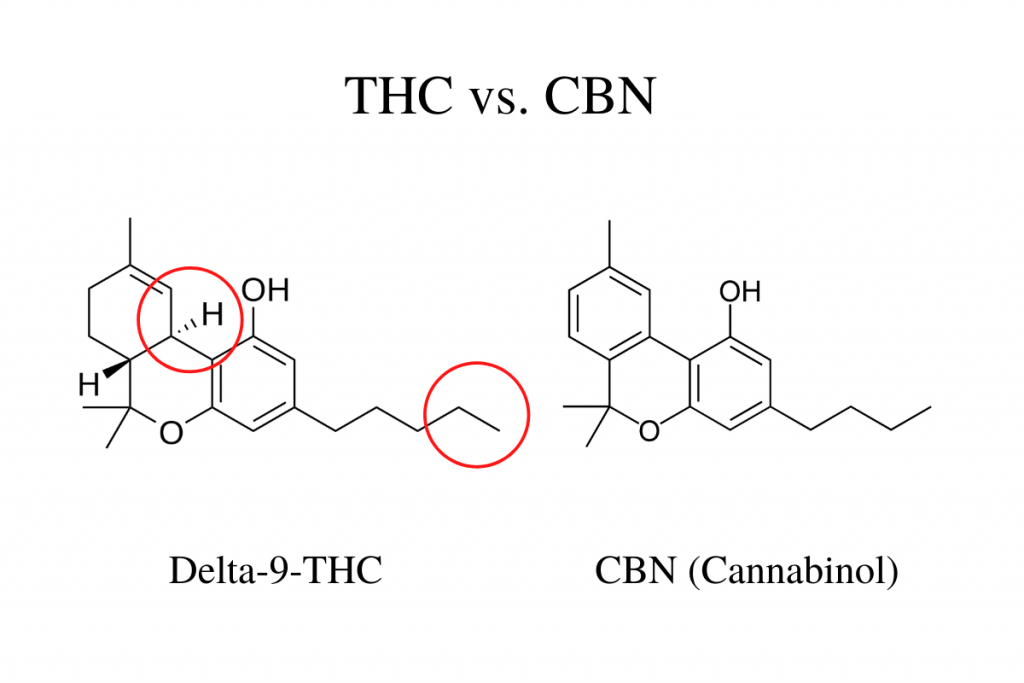
What’s the Dose of CBN?
There isn’t a lot of research available on CBN quite yet. There isn’t nearly as much information surrounding the effective dose of CBN as there is for cannabinoids like CBD or THC.
With that said, most of the research we do have suggests similar dosage ranges as CBD. Several studies have used doses of around 25 or 50 mg of CBN that have shown clear benefits.
In general, stick to the same dosages recommended for CBD when dosing CBN — but make sure to play around with the dose slightly depending on how it affects you. Some people need higher doses; others need lower doses. It can be hard to estimate the ideal dose of this cannabinoid until you try it yourself.
Check out our CBD dosage calculator to get started. Aim for a mild dose to start, and increase gradually once you know how it affects you individually.
CBN vs. CBD: What’s the Difference?
CBD and CBN share common ancestry — but their structure and effect profiles are very different.
CBD (cannabidiol) is made from CBG (cannabigerol) — which is considered the “cannabinoid stem cell”. Depending on the plant (hemp or marijuana), CBG is either converted to CBD or THC.
CBN is made as a byproduct as THC degrades over time.
Therefore, hemp plants — which naturally produce only small concentrations of THC, don’t have very high levels of CBN. This cannabinoid is most abundant in aged or improperly stored marijuana plants.
In terms of effects, the biggest difference in effects between CBD and CBN are the receptors they act on.
CBN is a CB1 receptor agonist, which is one of the actions THC uses to produce its effects.
CBD differs in that it binds to the CB1 and related CB2 receptors — but doesn’t activate them. Instead, CBD works to modulate these receptors — making it easier for our naturally-produced endocannabinoids to bind to these receptors.
Comparing CBN & CBD
| Metrics | CBD (Cannabidiol) | CBN (Cannabinol) |
| Average Concentration in Hemp | 16% | <1% |
| Average Concentration in Marijuana | 5% | <1% in fresh marijuana 1–2% in aged marijuana |
| Primary Health Benefit | Anti-inflammatory | Muscle-relaxant |
| Primary Target Receptors | CB1 & CB2 | CB1 |
| Psychoactivity | Very Mild | None |
| Cost Per Milligram | $ | $$ |
Types of CBN Products
CBN products aren’t easy to find. Only a few companies are making products that focus on this cannabinoid quite yet. But the industry is changing. We’ve been seeing a lot more CBN-specific products entering the market over the past couple of months.
We expect there to be a lot more CBN products over the next couple of years as more research is published highlighting the unique therapeutic value of this novel cannabinoid.
At the moment, the best way to use CBN is in the form of a concentrated extract or a tincture. You can also make your own CBN flower by “aging” marijuana flower in conditions that are conducive to the breakdown of THC into CBN.
1. CBN Flower
There are no CBN hemp flower strains currently available — however, you can get a flower that contains high concentrations of CBN by ordering “aged” marijuana flowers.
The THC in marijuana will begin to break down over time. Some will degrade into the slightly less psychoactive delta 8 THC; others will form into CBN instead.
You can buy a “CBN flower” that has already been aged and contains higher than average CBN, or you can make it yourself.
THC breaks down into CBN at a faster rate when exposed to light and oxygen. Normally, when storing hemp or marijuana flowers, you want to keep them away from any light source, in a cool area of the house, and in an airtight container.
If the goal is to increase the CBN content of the flower, make sure you don’t follow any of this advice. Store it in a see-through glass jar somewhere exposed to light. Sunlight is the best, but ambient artificial lighting is fine too. Open the jar to let in fresh oxygen often.
It will take between 3 and 6 months for the CBN content to increase the flower. The longer you store it, the higher the CBN content.
Warning: These products are psychoactive and aren’t legal in all 50 states or globally. Know your local laws before you place an order for any of these products.
2. CBN Concentrates
Many companies are starting to branch out into these more novel cannabinoid extracts. CBN is particularly popular these days and is much easier to make compared to other trace cannabinoids like CBC or THCV.
Companies will make CBN extracts by first converting as much of the THC into CBN as possible. This is done by exposing the extract to UV light and oxygen.
Once the CBN content increases, it’s extracted using many of the same methods used to create other concentrated cannabinoid extracts. Solvents, supercritical CO2, and thin-film distillation are all great options.
CBN concentrates are available in the form of a concentrated crystalline powder, thick syrupy resin, or waxes.
Best CBN Concentrates:
- Industrial Hemp Farms CBN Isolate
- Industrial Hemp Farms CBN Distillate
- Bloom Hemp CBN Concentrate Powder
3. CBN Tinctures
CBN tinctures start out as a CBN concentrate, which is then infused into a carrier oil like MCT or hemp seed oil in specific doses.
Tinctures are easier to use than concentrates and don’t need to be vaped or smoked.
You can use CBN tinctures in the same way you would use CBD oil. The dose of this cannabinoid is very similar as well, so you can follow the same dosage advice given for CBD oil to get you into the right ballpark.
Best CBN Tinctures:
Is CBN Legal?
The only cannabinoid that’s specifically regulated in the United States, Canada, and most other countries around the world is THC.
Cannabis sativa plants that contain less than 0.3% THC (0.2% in Europe) are classified much differently than plants that naturally contain higher than this threshold.
Plants that make less than 0.3% THC are considered hemp — which is legal to buy and use in most parts of the world.
Plants that make more than 0.3% THC are classified as marijuana — which is a schedule I drug in the US and many other countries. You can only buy and use marijuana products legally in certain countries, states, or with medical approval.
CBN products are limited by these same laws.
Any CBN products made from hemp plants as the starting material is completely legal to order (in most places). These laws follow the same logic as CBD, which has a lot more development and information online. If CBD is legal where you live, it’s more than likely that CBN is legal too.
On the flip side, CBN products made from marijuana are subject to the same laws as marijuana products — even if the THC content is below psychoactive levels.
The problem with this system is that it’s very inefficient to make CBN from hemp plants. CBN is made from THC, so plants that are already low in THC produce very small CBN yields. Manufacturers need to use substantially more starting material to make CBN products than they would if they were using marijuana instead.
With that said, there are a few companies making CBN products from hemp today. These products are legal throughout the US, Canada, Mexico, and most of Europe.
Always check the THC content before you order CBN products. If it’s higher than 0.3% (or 0.2% in Europe), be warned that this may not be legal where you live.
Therapeutic Benefits of CBN
Each cannabinoid made by the cannabis plant has a unique effect profile associated with it. Most of the research over the past 20 years has been focusing on the effects of CBD or THC — but there’s a growing interest in research programs focused on exploring the medical value of other cannabinoids as well — including CBN.
CBN has been shown to possess a variety of medicinal benefits. Research on this compound is still in the early stages, but every year we’re seeing promising new research on the medical applications of this novel cannabinoid.
Here are some of the most significant findings so far:
- CBN may offer neuroprotective benefits — Animal studies have shown CBN may offer neuroprotective effects against ALS [1]
- CBN may inhibit the growth of harmful microorganisms — in vitro research has shown that CBN concentrates inhibit the growth of several methicillin-resistant Staphylococcus aureus (MRSA) strains [2]
- CBN is a potent appetite stimulant — animal studies have shown CBN increased the duration and frequency of feeding times in rats [3]
- CBN may alleviate arthritis symptoms — Mice given CBN were protected from the development of collagen-induced arthritis compared to the control group [4]
- CBN may reduce intraocular pressure (IOP) in glaucoma — Early studies suggest CBN shares similar effects on reducing IOP as THC [5]
- CBN is a muscle-relaxant — In vitro research has shown that CBN on its own and in combination with CBD offers potent muscle-relaxant and analgesic effects [7]
The Future of CBN
As the interest in novel cannabinoids continues to grow every year, more cannabis companies will likely start to produce their own versions of CBN flowers, tinctures, or other CBN-derived products.
Most of the novel cannabinoids (anything except CBD or THC) are produced in exceptionally low concentrations in the plant. This means that in order to create concentrated extracts of these plants, a substantial amount of raw material needs to be used. This limits the production of these compounds substantially.
CBN is different in that it’s a natural degradation product of THC — which is readily available in large quantities. CBN products can be created very cheaply and in large supply.
Because of this, along with the numerous health benefits and non-psychoactive status of this cannabinoid, we expect to see CBN products becoming much more popular within the next couple of years.
References
- Weydt, P., Hong, S., Witting, A., Möller, T., Stella, N., & Kliot, M. (2005). Cannabinol delays symptom onset in SOD1 (G93A) transgenic mice without affecting survival. Amyotrophic Lateral Sclerosis, 6(3), 182-184.
- Appendino, G., Gibbons, S., Giana, A., Pagani, A., Grassi, G., Stavri, M., … & Rahman, M. M. (2008). Antibacterial cannabinoids from Cannabis sativa: a structure-activity study. Journal of natural products, 71(8), 1427-1430.
- Farrimond, J. A., Whalley, B. J., & Williams, C. M. (2012). Cannabinol and cannabidiol exert opposing effects on rat feeding patterns. Psychopharmacology, 223(1), 117-129.
- Zurier, R. B., & Burstein, S. H. (2016). Cannabinoids, inflammation, and fibrosis. The FASEB Journal, 30(11), 3682-3689.
- Kogan, N. M., & Mechoulam, R. (2007). Cannabinoids in health and disease. Dialogues in clinical neuroscience, 9(4), 413.
- Karniol, I. G., Shirakawa, I., Takahashi, R. N., Knobel, E., & Musty, R. E. (1975). Effects of Δ9-tetrahydrocannabinol and cannabinol in man. Pharmacology, 13(6), 502-512.
- Wong, H., & Cairns, B. E. (2019). Cannabidiol, cannabinol, and their combinations act as peripheral analgesics in a rat model of myofascial pain. Archives of oral biology, 104, 33-39.

